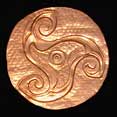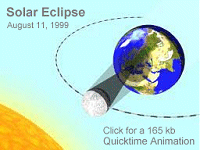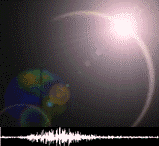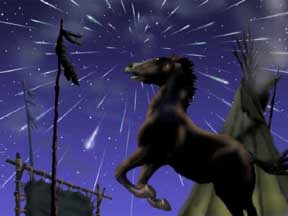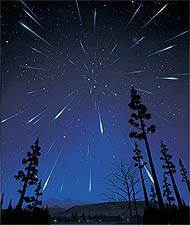text translation service for many worldwide languages
Morien Institute Skywatching Calendars for:
2007 | 2006 | 2005 | 2004 | 2003 |
The Morien Institute Skywatching Expeditions have developed out of a series of familiarity sessions that have happened over many years. Identifying the stars and star patterns which form the constellations in the northern hemisphere is a process which is essentially one of re-orientation. After three or four successive clear nights the observer begins to appreciate the vastness of the universe, often for the first time, and the sporadic meteors that can be seen every night bring home the reality that it is a perpetually changing, living cosmos …
Once the basics of constellation-recognition has been achieved, time spent noticing the movements of the planets across the background of fixed stars seems to last longer, as the greater time-frames of our solar system are ‘experienced’. The pre-occupation with the cosmos that governed the lives of ancient peoples becomes less of a mystery as new skywatchers ponder with awe the vastness before them. Observing a meteor storm gives skywatchers a 3-D appreciation of our solar system, and drives home the discomforting reality that ‘space’ is far from ’empty’ … The ‘Morien Institute Skywatching Expeditions’ are designed to be educational, and modelled on the ancient Druid ‘hedge schools’, where tuition was given in the open air and focussed on the many aspects of natural philosophy – especially astronomy and the mysteries of nature and the universe. As well as night-time skywatching, all ancient cultures attached great importance to day-time celestial phenomena such as sunrises, sunsets, and eclipses, so we have also organised day-time ‘Skywatching Expeditions’ to observe these. Below are a sample of our various skywatching activities, and details of where and when we run our skywatches …
the Leonid meteor shower skywatch – 2001 This November’s Leonid Meteor shower is causing much more excitement than usual. The Earth passes through the orbital path of the comet Tempel-Tuttle on November 17th, 18th, 19th, and astronomers are predicting that as we pass through the edge of two streams of cometary debris left behind on its passage through our solar system in 1699, 1767 and 1866, we could be in for a spectacular display of ‘shooting stars’ similar to that which occurred in 1966.
Numbers of up to 8,000 meteors per hour at the ‘peak’ are being spoken about by many respected sources, as the pattern of last year’s Leonid shower is similar to that which occurred in 1965, the year before the spectacular ‘Leonid storm of 1966’. The orbital period of the comet Tempel-Tuttle is 33 years, and during the last ‘storm’ in 1966 there were very few satellites in Earth orbit. Now more than ever before there are many more satellites running all of our telecommunications, and in 1999 a close watch was being kept on them, as even fine dust particles travelling at 70,000 miles per hour can completely trash the onboard electronics of a satellite. Four were rendered inoperative by the 1998 Leonid shower. The various military groups kept quiet about their three, and told the only private satellite operator affected to do the same. There is growing concern about this coming November’s Leonid meteor storm which NASA are predicting will be the strongest in 35 years.
The Morien Institute will be organising skywatching sessions again this year in Bangor, North Wales; Rhondda/Pontypridd, South Wales; and on the Gower Peninsular, Swansea, South-West Wales. Nasa advises skywatchers to begin at 10.00pm Universal Time, which is also 10.00pm GMT. Although the peak could happen at any time, it is more likely to be in the early hours of the 18th and 19th, between midnight and dawn.
anyone wishing to join our skywatch sessions please email us beforehand for directions to the observation points
For those who would like to organise their own skywatching sessions, we recommend you visit Thursday’s Classroom, which is the Nasa educational website. This is especially important for parents who want to make it a family occasion, and teachers who would like to make it a school project. Nasa has made a great deal of information about this year’s expected Leonid meteor storm available for families and schools, including ‘lesson plans’ and ‘activity sheets’. Useful to anyone else planning a skywatch session, it also gives many interesting details of the Leonids’ history. It is not just our planet Earth that will be directly in the path of the Leonid cometary debris stream. Our Moon will also be in the path of the meteoroids. The big difference with the Moon, however, is that it doesn’t have an atmosphere like Earth, and ‘every’ meteoroid travelling in it’s path will hit the surface. It may be possible even with the unaided eye to see the bright flashes as medium size meteorites crash into the surface of the Moon.
Don’t forget that November is ‘cold’, so wrap up warm. Several thin layers is much, much better than one thick layer, and wear a hat as almost one third of body heat is lost through an unprotected head. Hot soup is a better idea than tea, coffee or alcohol, which have diuretic properties. Lay well back in a deckchair, or an inflatable mattress to avoid getting a neck-ache. Have fun. Clear Skies …
visit the sites below for more information about Leonid Meteors showers
Armagh Observatory | Marshall Space Flight Center | Leonids Live
August 11th 1999 total eclipse of the sun
December 13th. 1998 Geminid skywatch The ‘radiant’ for this meteor shower is a degree or so to the north-west of the star Castor in the constellation of Gemini – hence ‘GEMINIDS’. Discovered in 1862, the best background on the Geminids is found on the Nasa website which says:
“The first Geminid meteors suddenly appeared in the mid-1800’s. Those early showers were unimpressive, boasting a mere 10-20 shooting stars per hour. Since then, however, the Geminids have grown in intensity until today it is one of the most spectacular annual showers.
In 1996, the last time the Geminids appeared in a dark moon-less sky, observers saw as many as 110 per hour. Sky-watchers with clear skies should see at least that many this year if the Geminids continue to intensify.
After the discovery of the Geminids in 1862 astronomers began searching for the parent comet. Most meteor showers result from debris that that boils off a comet’s nucleus when it passes close to the sun. This debris orbits the sun along with the comet, forming a thin, elongated stream of meteoroids that become shooting stars when they hit Earth’s atmosphere.
Years of searching proved to no avail until finally, in 1982, NASA’s Infrared Astronomical Satellite discovered a curious object moving in the same orbit as the Geminid meteoroid stream. The orbital match was so good that it had to be the source of the debris, but to the surprise of many it wasn’t a comet. The source of the Geminids was apparently a rocky asteroid. 3200 Phaethon, as the asteroid is now known, is in a highly elliptical 1.4 year orbit that brings it within 0.2 AU (astronomical units) of the Sun. It made its closest recent approach to Earth in December 1997 when it passed within 0.31 AU of our planet. One AU is the distance from the Earth to the Sun.
But how does an asteroid produce a meteoroid debris stream? Comets do it easily whenever they pass close enough to the sun to heat their frozen nucleus. Tiny bits of ice and dust naturally bubble away into interplanetary space. Rocky asteroids are made of tougher stuff, however, so it is unclear how bits of 3200 Phaethon would break or boil off to form a meteoroid stream.”
The full text of the above appeared in the Cambridge Conference Digest for December 7th. 1998, and is available on the archive.
You can also access the Nasa Science webpages for this year’s Geminid shower directly.
The weather is a major problem for all skywatchers no matter where or when. Ancient peoples no doubt had the same wish-list as modern astronomers – clear skies
November 17th 1998 Leonid skywatch
Previous ‘skywatches’ consisted simply of individuals helping each other to gain a greater understanding of the cosmos to help with our astro-archæological researches. Our informal tuition sessions began properly on November 17th. 1998 with the three LEONID SKYWATCH expeditions to ancient sites in different parts of Wales. The ‘radiant’ from which the meteors, which manifest as shooting-stars, appear to originate is within the constellation of Leo – hence they are referred to as ‘LEONIDS’
This image was created by Eric Young, a graphic artist at Washington University at St. Louis. Eric created the image for Gary Kronk based on the numerous descriptions of the 1833 meteor storm by various Sioux tribes in the region around North and South Dakota. We have made it into an image/link to Gary Kronk’s meteor/comet website, where he has gathered some interesting information about Leonid observations over the past 1000 years.
The artists impression of a Leonid shower above was sent to us but without any details of where it originated. If anyone looking at this page recognises it, please contact us with the name of the artist, or website where it can be found, so we can afford it proper credits.
Hidden amongst most meteor showers, which consist mainly of interstellar dust particles that are the remnants of cometary debris, are larger rocks which can be any size. These are called asteroids, and those that have orbital paths that cross the orbital path of the Earth are referred to in astronomical terms as Potentially Hazardous Asteroids, or PHA’s. In general terms though, they are also called Near Earth Objects, or NEO’s. Since March 1998, when the asteroid known as 1997 XF11 was predicted to pass just 30,000 miles from Earth in AD 2028, there has been a great deal of action initiated to track the thousands upon thousands of PHA’s out there in space. Up to that moment there had been 112 known PHA’s in Earth-crossing orbits discovered and listed by the Minor Planet Center.
The website you can access by clicking on that link also has a list of all the predicted approaches of asteroids and comets within about 19 million miles of the Earth during the next third of a century.
Morien Institute Skywatching Calendars for:
2007 | 2006 | 2005 | 2004 | 2003 |
please visit our for a wide range of ‘telescopes’, ‘binoculars’, ‘eyepieces’, ‘filters’, ‘tripods’ and whatever ‘accessories’ you could possibly need …
the Morien Institute supports:
please take a look at our astronomy programs & night-sky software for PCs and our Ancient Cosmic Impacts bookshoppe for a wide selection of books that explore human prehistory from the perspective that our planet has been regularly bombarded by cometary debris …
|
